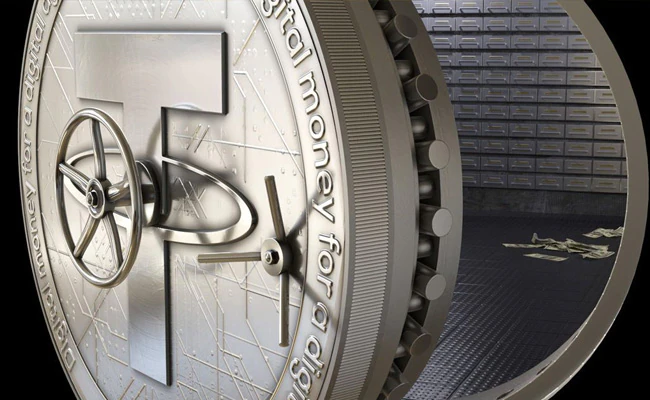
Journalists from the Wall Street Journal published an article that calls into question the reliability of Tether. Journalists believe that the loss of 0.3% of the value of Tether’s reserve assets will make it unviable. Tether accuses the publication of disinformation.
We have already written recently about how fake news was actively discussed on how the SEC was going to prosecute Tether for the illegal sale of commercial securities. However, the deception was quickly uncovered. Then the chief technical officer of Tether, Paolo Ardoino, said that such attacks on the company were aimed at damaging the reputation of Tether and questioning its honest work to achieve transparency.
It wasn’t long before someone again attempted to inflict reputational losses on the company. This time, the journalists of the world-famous magazine conducted an analysis of Tether’s reserves in their article and came to the conclusion that reducing the value of Tether’s reserve assets by only 0.3% would be a serious problem, and also pointed out other “problems”.
“A 0.3% fall in assets could render Tether technically insolvent — a development that skeptics warn could reduce investor confidence and spur an increase in redemptions.” — the article says.
Of course, the reaction of the Tether team was immediate. A post appeared on the company’s blog in which the Wall Street Journal article was directly mentioned as disinformation aimed at discrediting Tether.
“The most recent article from the Wall Street Journal against Tether, is a series of unsubstantiated conclusions. In a time where false information is being weaponized to cause harm across the globe, it is our responsibility to clarify the facts for readers. The article seeks to discredit the work that Tether has put into transparent and honest communication to the public.”
The message published on the Tether blog details the facts of the disinformation. Journalists wrote that Tether attestations are conducted by BDO, , which is insufficiently independent of Tether.
“Instead of a full audit, Tether, like other leading stablecoins, publishes an “attestation” showing a snapshot of its reserves and liabilities, signed off by its accounting firm.”
However, Tether pointed out that BDO is an independent company and it conducts certifications for large companies around the world.
“The article seeks to discredit the work that Tether has put into transparent and honest communication to the public. BDO, a very reputable and independent Top 5 audit firm, is not a “Tether accounting firm”, as erroneously written by the WSJ.”
It is very rare that independent accounting firms engage in crypto company audits. It may be connected with risk clearance procedures of audit firms and in this case we also see that neutral “attestation” is used instead of “audit”. BDO is an independent firm and any connection with Tether implied from the WSJ is misleading at best.
Journalists have used other methods of manipulating the reader’s opinions to create a negative image of Tether, comparing it with projects that have failed. In addition to the already classic comparison with the fallen Terra, the authors of the article include Celsius. The authors cited the following as an example statement from the company’s executive director about the audit and immediately wrote about their bankruptcy.
“Celsius Chief Executive Alex Mashinsky said last year that its system removed “the need for the slow, antiquated process of traditional auditing.” Celsius filed for bankruptcy last month, disclosing a roughly $1.2 billion hole in its balance sheet.”
We do not claim that Tether has perfect reserves. But recent events look as if everyone is poking at one vulnerable point of the company — reserve assets in order to cause panic and, if possible, manipulate investors’ decisions.

